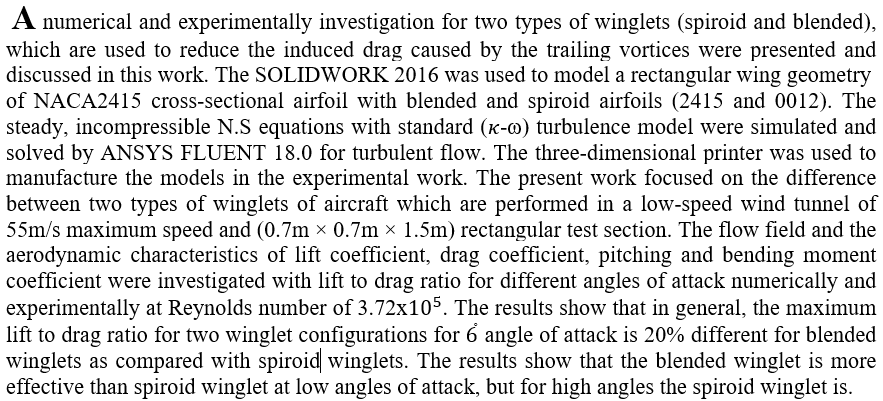Background: Ankylosing spondylitis is a chronic inflammatory disease that mostly involves the spine and sacroiliac joints. It is associated with a decreased quality of life. Biological medicines such as infliximab and its biosimilar are the mainstay treatments for active ankylosing spondylitis.
Objective: The study objective was to conduct a pharmacoeconomic study comparing the cost-effectiveness of the reference infliximab with its biosimilar in ankylosing spondylitis patients visiting public hospitals.
Subjects and Method: This is a two-center pharmacoeconomic study performed at two large teaching governmental hospitals in Baghdad, Iraq, which s
... Show More (4)
(4)
 (5)
(5)
A condense study was done to compare between the ordinary estimators. In particular the maximum likelihood estimator and the robust estimator, to estimate the parameters of the mixed model of order one, namely ARMA(1,1) model.
Simulation study was done for a varieties the model. using: small, moderate and large sample sizes, were some new results were obtained. MAPE was used as a statistical criterion for comparison.
In this study Microwave and conventional methods have been used to extract and estimate pectin and its degree of esterification from dried grapefruit and orange peels. Acidified solution water with nitric acid in pH (1.5) was used. In conventional method, different temperature degrees for extraction pectin from grape fruit and orange(85 ,90 , 95 and 100?C) for 1 h were used The results showed grapefruit peels contained 12.82, 17.05, 18.47, 15.89% respectively, while the corresponding values were 5.96, 6.74, 7.41 and 8.00 %, respectively in orange peels. In microwave method, times were 90, 100, 110 and 120 seconds. Grapefruit peels contain 13.86, 16.57, 18.69, and 17.87%, respectively, while the corresponding values were of 6.53, 6.68, 7.2
... Show More (4)
(4)
 (2)
(2)
The current research aims to identify: 1) the challenges facing blended education from the point of view of teachers of students with disabilities. 2) The challenges facing blended education from the point of view of teachers of students with disabilities according to the gender variable (males-females). 3) The challenges facing blended education from the point of view of teachers of students with disabilities, according to the academic qualifications of graduates
(institute-bachelors-masters). 4) The challenges facing blended education from the point of view of male and female teachers, according to the functional service period with students with disabilities (less than 8 years - from 9 to 15 years - 16 years and above). 5) the
... Show MoreIs to obtain competitive advantage legitimate objective pursued by all organizations to achieve, because they live today in environments of rapid change and dynamic in order to meet the demands of the customer changing as well as intense competition between the organizations, which requires them to get the location of competitive markets in order to do this will remain to do the building and strengthening competitive advantage to be able to achieve, but that this feature is not easy and is not only through the identification and use of a successful strategy for a competitive standard and then manage it successfully. Hence the research problem of determining the sources of differentiation strategy and its impact on the dimensions of compe
... Show MoreThe main objectives of this study are to study the enhancement of the load-carrying capacity of Asymmetrical castellated beams with encasement the beams by Reactive Powder Concrete (RPC) and lacing reinforcement, the effect of the gap between top and bottom parts of Asymmetrical castellated steel beam at web post, and serviceability of the confined Asymmetrical castellated steel. This study presents two concentrated loads test results for four specimens Asymmetrical castellated beams section encasement by Reactive powder concrete (RPC) with laced reinforcement. The encasement of the Asymmetrical castellated steel beam consists of, flanges unstiffened element height was filled with RPC for each side and laced reinforced which are use
... Show More (3)
(3)
 (3)
(3)
ABSTRACT
The researcher seeks to shed light on the relationship analysis and the impact between organizational values in all its dimensions (Administration Management, Mission, relationship management, environmental management) and strategic performance (financial perspective, customer perspective, the perspective of internal processes, learning and development) in the presidency of Two Universities of Baghdad & Al-Nahrain, it has been formulating three hypotheses for this purpose.
The main research problem has been the following question: Is there a relationship and the impact of bet
... Show MoreMany nations are seeing an increase in water pollution from dairy and cheese production due to the high organic and fat content in their waste products and the high temperature of their waste products, which elevates the water temperature and causes loss to ecosystem components. Reusing industrial wastewater that has been treated to guarantee no harm has been done to the environment is being hampered by a lack of water. This study compares the presence and absence of mixing in the anaerobic biological treatment of liquid waste for the cheese industry. To decrease heat exchange with the external environment, cube-shaped anaerobic reactors with dimensions of (30 x 30 x 30) cm and thick glass (10 mm) were utilized in this investigation
... Show More (1)
(1)
 (1)
(1)
Background. The presence of black triangles around the dental implant-supported prosthesis and the failure to construct adequate papillae around them bothers dental implantologists. Peri-implant surgical soft tissue management will improve esthetics, function, and implant survival. Aim. To compare the effects of rolled and nonrolled U-shaped flaps combined with a temporary crown in enhancing the soft tissue around dental implants. Materials and Methods. Forty patients were included in this study; all patients were operated on by the same maxillofacial surgeon at Al-Iraq specialized dental clinics from January 2019 to January 2020. Patients were divided randomly into two groups: group A: at the second stage of implant surgery, a U-sh
... Show More (7)
(7)
 (5)
(5)

